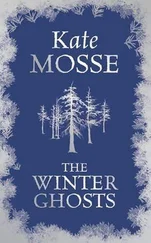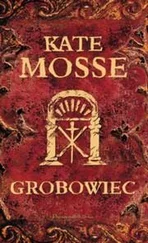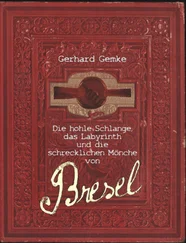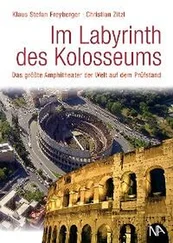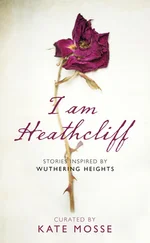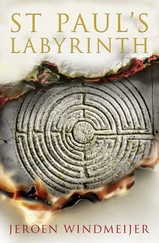Alice was shaking her head in disbelief. “You’re saying that the Grail is not a Christian concept at all. That all these myths and legends are built on a… a misunderstanding.”
“A subterfuge rather than a misunderstanding.”
“But for two thousand years the debate has been about the existence of the Holy Grail. If now it is revealed not only that such a thing as the Grail legends are true but…” Alice broke off. She found it hard to believe what she was saying. “It is not a Christian relic at all, I can’t even begin to imagine…‘
The Grail is an elixir that has the power both to heal and significantly prolong life. But for a purpose. It was discovered some four thousand ago in Ancient Egypt. And those who developed it and became aware of its power realised that the secret had to be kept safe from those who would use it for their own benefit as opposed to the benefit of others. The sacred knowledge was recorded in hieroglyphs on three separate sheets of papyrus. One gave the precise layout of the Grail chamber, the labyrinth itself; one listed the ingredients required for the elixir to be prepared, the third the incantation to effect the transformation of the elixir into the Grail. They buried them in the caves outside the ancient Avaris.“
“Egypt,” she said quickly. “When I was doing some research, trying to understand what I had seen here, I noticed how often Egypt came up.”
Audric nodded. “The papyri are written in classical hieroglyphs – the word itself means ”God’s words“ or ”divine speech“. As the great civilization fell into dust and decay, the ability to read the hieroglyphs was lost. The knowledge contained in the papyri was preserved, handed guardian to guardian, over the generations. The ability to speak the incantation or summon the Grail was lost.
“This turn of events was without design, but it, in turn, added an additional layer of secrecy,” he continued. “In the ninth century of the Christian era, an Arab alchemist, Abu Bakr Ahmad Ibn Wahshiyah, decoded the secret of the hieroglyphs. Fortunately, Harif, the Navigataire , became aware of the danger and was able to confound his attempts to share his knowledge. In those days, centres of learning were few and communication between peoples slow and unreliable. After that, the papyri were smuggled to Jerusalem and concealed there within underground chambers on the Plains of Sepal.
“From the 800s to the 1800s, no one made significant progress in deciphering hieroglyphs. No one. Their meaning was only elucidated when Napoleon’s scientific and military expedition to North Africa in 1799 uncovered a detailed inscription in the sacred language of hieroglyphs, in everyday demotic Egyptian of the time and Ancient Greek. You have heard of the Rosetta Stone?”
Alice nodded.
“From that point, we feared it was only a matter of time. A Frenchman, Jean-Francois Champollion, became obsessed with breaking the code. In 1822, he succeeded. The wonders of the ancients, their magic, their spells, everything from funerary inscriptions to the Book of the Dead , all suddenly could be read.” He paused. “Now, the fact that two books of the Labyrinth Trilogy were in the hands of those who would misuse it became a cause for fear and concern.”
His words fell like a warning. Alice shivered. She suddenly realised the day had faded. Outside, the rays of the setting sun had painted the mountains red and gold and orange.
“If the knowledge was so devastating, if used for ill rather than good, then why did Alais or the other guardians not destroy the books when they had the chance?” she asked.
She felt Audric grow still. Alice realised she had hit to the heart of his experience, of the story he was telling, even though she didn’t understand how.
“If they had not been needed, then yes. Perhaps that might have been a solution.”
“Needed? Needed in what way?”
“That the Grail bestows life, the guardians have always known. You called it a gift and,” he caught his breath, “I understand that some might see it so. Others might see it with different eyes.” Audric stopped. He reached for his glass and took several mouthfuls of wine, before putting it back on the table with a heavy hand. “But it is life given for a purpose.”
What purpose?“ she said quickly, fearful he would stop.
“Many times in the past four thousand years, when the need to bear witness has been strong, the power of the Grail has been summoned. The great, long-lived patriarchs of the Christian Bible, the Talmud, the Koran are familiar to us. Adam, Jacob, Moses, Mohammad, Methuselah. Prophets whose work could not be accomplished in the usual span allotted to men. They each lived for hundreds of years.”
“But these are parables,” protested Alice. “Allegories.”
Audric shook his head. They survived for centuries precisely so that they could speak of what they had witnessed, bear testimony to the truth of their times. Harif, who persuaded Abu Bakr to conceal his work revealing the language of Ancient Egypt, lived to see the fall of Montsegur.“
“But that’s five hundred years.”
“They lived,” Audric repeated simply. “Think of the life of a butterfly, Alice. An entire existence, so brilliant, but lasting just one human day. An entire lifetime. Time has many meanings.”
Alice pushed her chair back and walked away from the table, no longer knowing what she felt, what she could believe.
She turned. “The labyrinth symbol I saw on the wall of the cave, on the ring you wear – this is the symbol of the true Grail?”
He nodded.
“And Alais? She knew this?”
“At first, like you, she was doubtful. She did not believe in the truth contained within the pages of the Trilogy, but she fought to protect them out of love for her father.”
“She believed Harif was more than five hundred years old?” she persisted, no longer trying to keep the scepticism out of her voice.
“Not at first, no,” he admitted. “But over time, she came to see the truth. And when her time came, she found she was able to speak the words, understand the words.”
Alice came back to the table and sat down. “But why France? Why were the papyri brought here at all? Why not leave them where they were?”
Audric smiled. “Harif took the papyri to the Holy City in the tenth century of the Christian era and had them hidden near the Plains of Sepal. For nearly a hundred years, they were safe, until the armies of Saladin advanced on Jerusalem. He chose one of the guardians, a young Christian chevalier called Bertrand Pelletier, to carry the papyri to France.”
Alais’ father.
Alice realised she was smiling, as if she had just heard news of an old friend.
“Harif realised two things,” Audric continued. “First, that the papyri would be safer kept within the pages of a book, less vulnerable. Second, that because rumours of the Grail were starting to circulate through the courts of Europe, how better to hide the truth than beneath a layer of myth and fable.”
“The stories of the Cathars possessing the Cup of Christ,” said Alice, suddenly understanding.
Baillard nodded. “The followers of Jesus the Nazarene did not expect him to die on the Cross, yet he did. His death and resurrection helped give birth to stories of a sacred cup or chalice, a grail that gave everlasting life. How these were interpreted at the time, I cannot say, but what is certain is that the crucifixion of the Nazarene gave birth to a wave of persecution. Many fled the Holy Land, including Joseph of Arimathea and Mary Magdalene, who sailed for France. They brought with them, it is said, knowledge of an ancient secret.”
“The Grail papyri?”
“Or treasure, jewels taken from the Temple of Solomon. Or the cup that Jesus the Nazarene had drunk from at the Last Supper in which his blood had been gathered as he hung upon the Cross. Or parchments, writings, evidence that Christ had not died crucified but yet lived, hidden in the mountains of the desert for a hundred years and more with a small elect band of believers.”
Читать дальше




